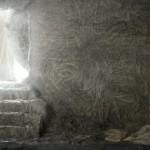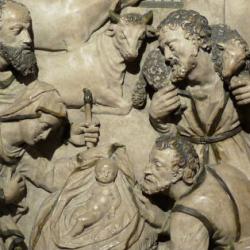For many people, J.R.R. Tolkien’s Lord of the Rings is their favourite book. It was voted the greatest book of the twentieth century by the British public. Since then, it also became an Academy award winning film trilogy.
Tolkien’s works of fantasy are famously intricate, with a whole world of languages and creatures and cultures and history. Some of his legendarium makes it into the story proper, but much of the rich complexity must be gleaned from Tolkien’s other tales or the voluminous appendices in the back of the book.
For all its unforgettable portrait of evil and the corrosive power of temptation, it is the compelling sense of providential good accompanying the tale that drives the plot.
This providence is alluded to at various points. When Frodo first discovers that the ring his Uncle Bilbo once chanced upon was actually the One Ring of power, he senses his doom. Sauron seeking it with all his might, and the treacherous ring is also seeking to return to its maker.
Yet who can forget Gandalf’s words of hope about Bilbo’s accident to Frodo?
‘Behind that there was something else at work, beyond any design of the Ring-maker. I can put it no plainer than by saying that Bilbo was meant to find the Ring, and not by its maker. In which case you also were meant to have it. And that may be an encouraging thought.’ (1.2)
Exactly who could have overruled the will and purpose of Sauron’s evil agency is never made explicit. In fact, one of the tale’s surprises is that although Tolkien was a staunch Catholic, there is no mention of God or formal appearance of religion in it.
Yet the sense of overarching purpose uniting Frodo and all the representatives of Middle Earth in his Fellowship, the sense of great historical moment, and the grand quest they embark upon is undeniably religious in character. The Fellowship are meant to participate in accomplishing the meaningful purpose of whoever’s will lay ‘beyond any design of the Ring-maker.’
As Gandalf again explains, “There are other forces at work in this world, Frodo, besides the will of evil.” Tolkien’s is not the fatalistic and amoral world of Game of Thrones.
But what is the nature of this force of good?
Tolkien’s lodestar of nature
The answer might be found in a scholarly note buried in Appendix B of The Lord of the Rings, where we learn that the ring was destroyed and Sauron overthrown on March 25th.
Even for a Catholic like Tolkien, the date might seem irrelevant. March 25th is Lady Day, the day of the feast of the Annunciation to Mary. Yet as a Medievalist, Tolkien knew that in patristic and medieval tradition, March 25th was also the historical date given for the Crucifixion. As Augustine explains:
‘He is believed to have been conceived on the 25th of March, upon which day also he suffered; so the womb of the Virgin, in which he was conceived, where no one of mortals was begotten, corresponds to the new grave in which he was buried, wherein was never man laid, neither before him nor since.’
The coincidence of these apposite events is crucial: the life and death of Jesus thereby formed a perfect circle, beginning and ending on the same calendar day.
But more importantly, Gabriel announced the fulfillment of what God first announced to Eve in Genesis 3:15. As the Gospel of John puts it: ‘the Word became flesh and dwelled among us. We have seen his glory, the glory of the only Son, who came from the Father, full of grace and truth.’ (Jn 1:14) God himself was the promised man who would break the curse of sin.
The Venerable Bede adds a possible further layer of meaning (p.25), making the date of the incarnation an unambiguous natural sign from God. Bede reasons that March 25th marked the fourth day of creation, the day in which the ‘luminaries in the expanse of the heavens to separate the day from the night… (were) for signs and for seasons, and for days and years’ (Gen. 1:14). (my italics) For more, see here.
The sign of the Christ-light
And what precisely did the heavenly sign depict? The triumph of the light over darkness in the conjunction of the solar and lunar cycle four days after the vernal equinox of Spring. John alludes to it both in his reference to Jesus as a sign that ‘the light shines in the darkness and the darkness has not understood it’ (Jn. 1.5) and that ‘The true light, which gives light to everyone, was coming into the world.’ (Jn. 1.9)
Biblical truth is clearer than fiction
Yet the truth of God, profoundly obscure in the eucatastrophe of Tolkien’s Lord of the Rings, is clear and unambiguous in Scripture.
Jesus repeatedly insists that He not only came to bear witness to the truth, but to suffer and to die as a sinless man for sinful mankind. After revealing His divine identity to his disciples, He then ‘began to teach them that the Son of Man must suffer many things and be rejected by the elders and the chief priests and the scribes and be killed, and after three days rise again.’ (Mk. 8.31) This emphasis upon the necessity of His death is clear, and the reasons are many.
The reason it is Good Friday is that the incredible heavenly signs of Jesus’ birth are more than matched by those signifying His death.
The supernatural signs of the crucifixion
In the Jewish system, the first hour of the day is 6 am, at the dawn’s early light. So when we are told that the time of the crucifixion was ‘when the sixth hour had come, (and) there was darkness over the whole land until the ninth hour.’ (Mk 15.33) it means that it was noon, and the sky was pitch black until 3 pm.
Clearly it is an astonishing event. But what does the sign mean?
Some people suggest that it was an eclipse. But solar eclipses never last more than 7 and a half minutes, and this darkness lasted three hours. Furthermore, we are told that Jesus was crucified at Passover. Passover always falls on a full moon when solar eclipses cannot occur.
No natural explanation suffices. So, something supernatural was taking place. The light that we have seen connotes God’s presence and blessing was replaced by the darkness that connotes his wrath and his curse. (Ex. 10.21-22)
But, astonishingly, this sign didn’t point where we would expect.
It is clear that God’s wrath and his curse were not directed at those who crucified Jesus, but upon Jesus Himself: ‘at the ninth hour Jesus cried with a loud voice, ‘Eloi, Eloi, lema sabachthani?’ which means, ‘My God, my God, why have you forsaken me?’ (Mk 15.34)
God’s wrath was poured out upon Jesus.
And then came the final sign: ‘Jesus uttered a loud cry and breathed his last. And the curtain of the temple was torn in two, from top to bottom.’ (Mk 15.37-38)
The Bible insists that no one can see God and live. (Ex. 33.20) Yet the massive curtain that shielded the people from the Holy of Holies was torn down by God, and direct access was granted into His presence. The sin that had kept them from his presence had been removed by Jesus’ death.
These events did not happen accidentally, but according to our good God’s good plan, a plan that, unlike Frodo, He carried through to the end.
The good news on Good Friday is that ‘Jesus came to save sinners – of which I am the worst.’ (1 Tim. 1.15)










